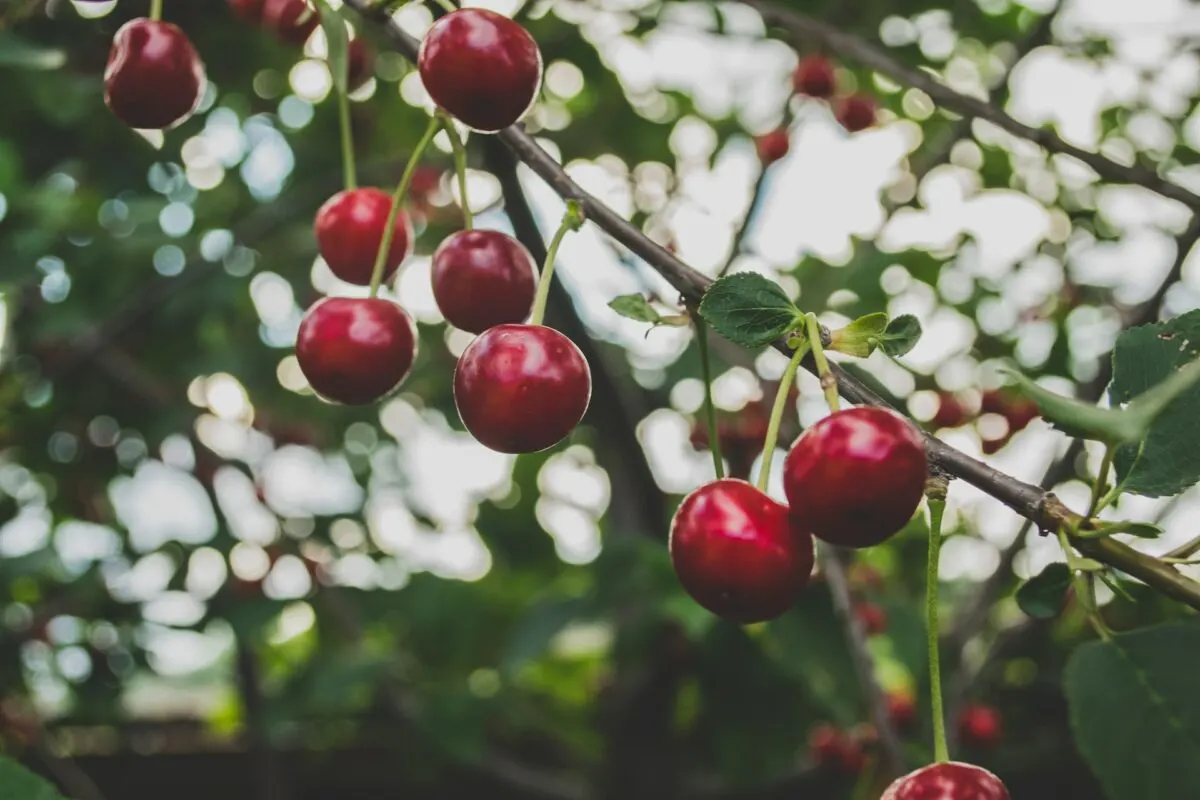In this post we will discuss whether or not cherries are a suitable snack for your dog to eat.
Dogs are descendants of wolves. The dog developed into more than 400 breeds from the gray wolf. Humans primarily developed dogs that serve particular societal needs and bred them to emphasize instincts evident from their first interactions with humans through the crudest form of genetic engineering.
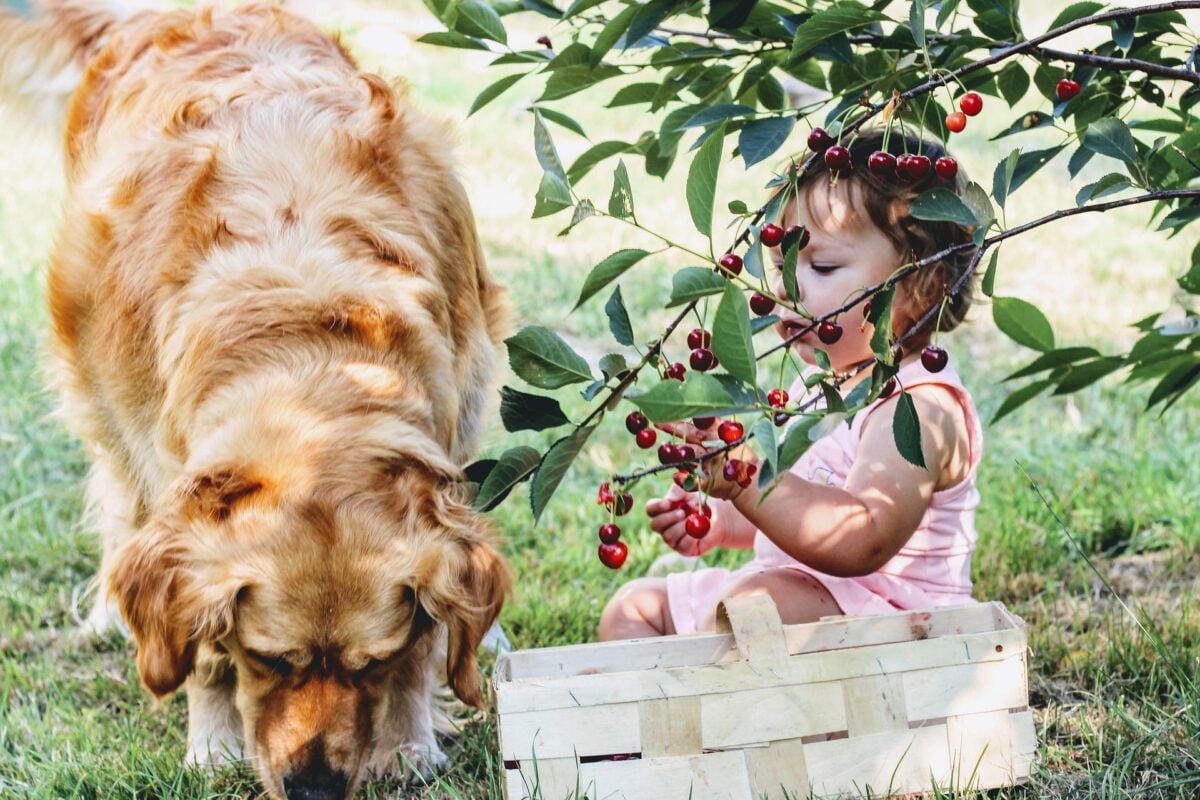
The dogs’ origins are uncertain, but the earliest canines were hunters with keen senses of smell and sight. Humans developed these instincts and produced new breeds as needs or desires changed.
Dogs are the first animal in the world to be domesticated. They are one of the most domesticated animal species in the world; they are also called man’s best friend. Most domestic dogs are pets, but many breeds can live independently in forests or on city streets.
A 2016 consumer insights study found that dogs exist in one-third of all households; hence, domestic dogs are the most widely owned pets worldwide.
Being man’s best friend and the most loyal companion, we only want the best for them. There are a lot of foods out there that humans find delicious, but which can prove lethal for our furry friends. So, in this post, we will investigate whether or not dogs can eat cherries.
Importance of a Healthy Diet
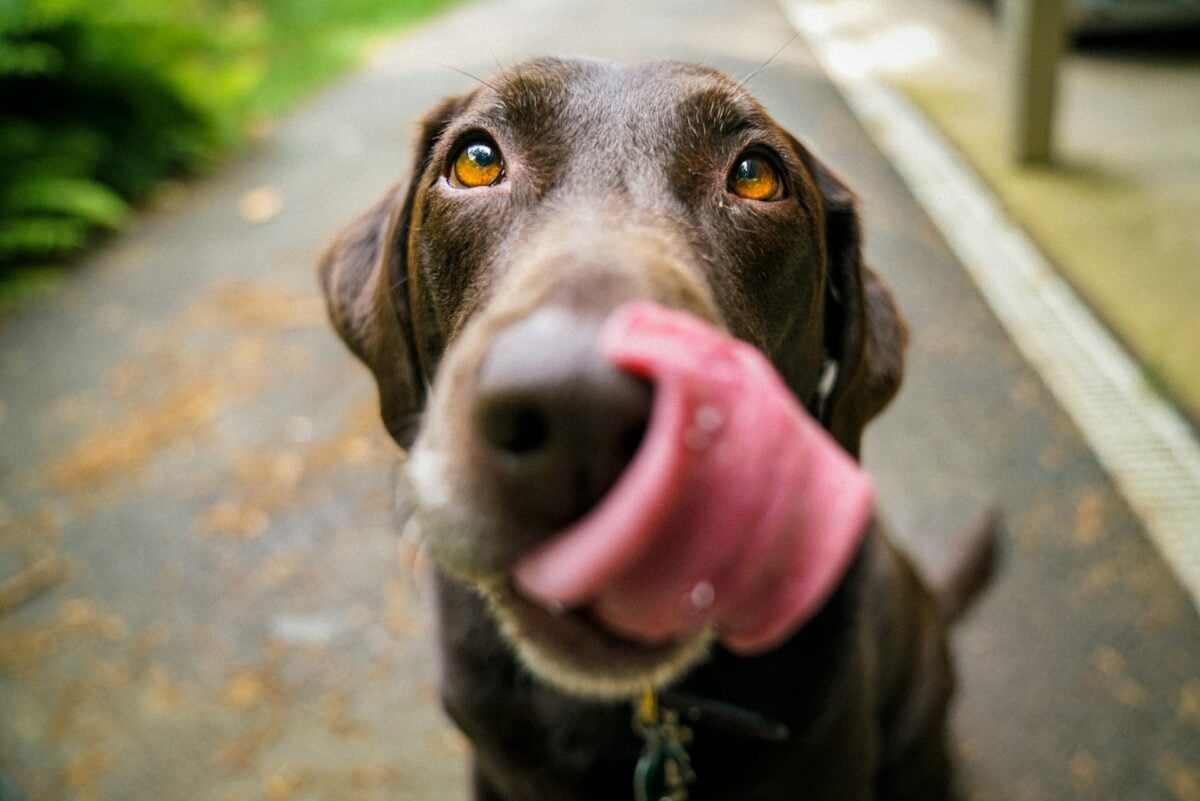
The diet of all pets is what their owners feed them; hence pet owners need to know what to feed their pets.
For your dog’s health, you must feed them the proper diet. Your dog needs a balanced diet every day, just like we do, to provide them with all the nutrients they require to stay healthy and active.
With the proper exercise, diet can significantly contribute to your dog’s ability to maintain an ideal shape. Diet also plays a significant role in your dog’s weight. Being overweight is bad for your dog’s health because it can prevent them from being as active as they should be and increase their risk of developing severe health issues.
The ideal diet for your canine friend should satisfy all their dietary requirements. While most commercial dog food brands meet at least the bare minimum of a dog’s nutritional needs, it’s important to remember that no two dogs have the exact dietary requirements.
Throughout their lives, dogs need a variety of nutrients in varying amounts. It is a good idea to feed your young dog a puppy formula or an “all life stages” food because the nutritional requirements of a puppy and an adult dog differ. Moreover, large breed dogs and puppies have different dietary needs than small breed dogs and puppies.
Dogs can enjoy certain foods as treats, such as bananas and carrots. However, there are some things they cannot consume, such as cherries. Your dog’s health is at risk from cherries and other foods like grapes, onions, and chocolate, which can result in an upset stomach to the extent of fatal poisoning.
Why Should Dogs Avoid Cherries?
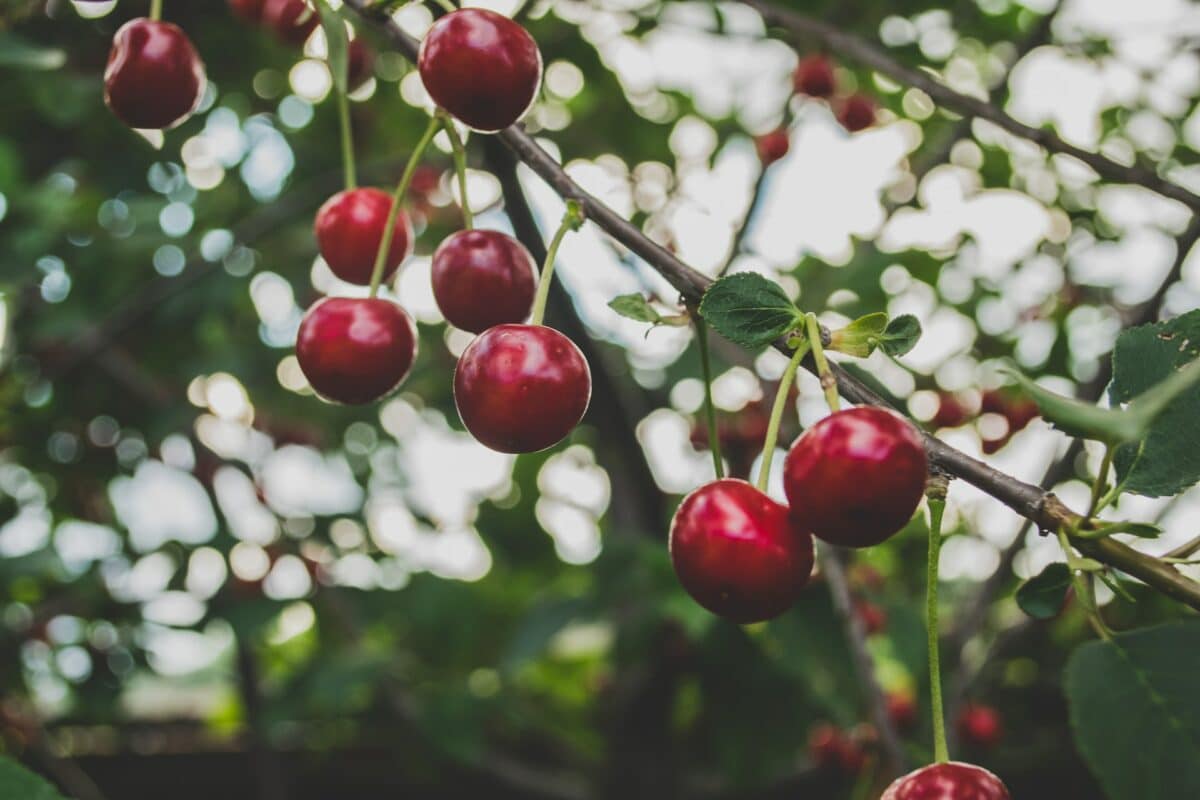
Cherries are a tasty summer treat packed with vitamins A and C, fiber, antioxidants, and melatonin, among other nutrients. Cherry trees are grown commercially for their fruits, which are then sold frozen and canned. These fruits can also be eaten raw and feature in many sauces.
Like many other fruits, cherries contain a natural chemical called cyanogenic glycosides. These compounds can release cyanide when metabolized, which is toxic to dogs.
The risk is higher in certain parts of the cherry, such as the pit and stem, which contain the highest cyanogenic glycosides. Eating even a tiny amount of these parts of the cherry can be dangerous for dogs. In addition, if a cherry is moldy or spoiled, it can contain even higher levels of cyanide and pose a greater risk to your dog’s health.
While cherries contain some healthy nutrients and many summer fruits are safe to share with our canine companions, they tend to cause more harm than good. Cherries are poisonous to dogs primarily because of the cyanide in the pit, leaves, and stems. Additionally, the pit might obstruct their digestive tract.
Dogs can tolerate cherries in small moderation; they are delicious berries that your dog might enjoy. Fresh cherries are low in calories and high in water. When obesity is a medical issue for American pets, fruit like that is often suggested as a substitute for treats.
Regarding fruits and vegetables, consult your veterinarian or pet toxicity lists like this. Then, remove any stems, pits, seeds, and peels.
Dogs can become poisoned by the cherries’ cyanide if they consume enough of it. There is no need to take the chance even though a single cherry pit or stem is frequently insufficient to result in cyanide poisoning.
Cherries Can Cause An Upset Stomach
The minor problem your dog might experience after eating a cherry pit is an upset stomach. Vomiting and diarrhea are symptoms of an upset stomach. Simple stomach discomfort is not a cause for concern. But bear in mind that some of the signs of cyanide poisoning also include stomach upset symptoms.
Keep a close eye out for additional cyanide poisoning symptoms if your dog exhibits symptoms like vomiting and diarrhea. Your dog is okay if an upset stomach is the only symptom. Any additional symptoms, however, indicate that you need to take your puppy to a veterinarian right away.
Dogs shouldn’t eat cherry pits, but if they do, there’s no need to panic: A dog would need to eat a lot of cherries to have a problem. Naturally, a large enough quantity of cherry pits, or larger pits like apple cores, stone fruit pits like peach and plum pits, could obstruct your dog’s intestines or pose a choking hazard.
How many cherries would it take to kill a dog? The dog would have to eat a lot of them—possibly an entire bag or more — and chew them up.
Risks Involved With Eating Cherries
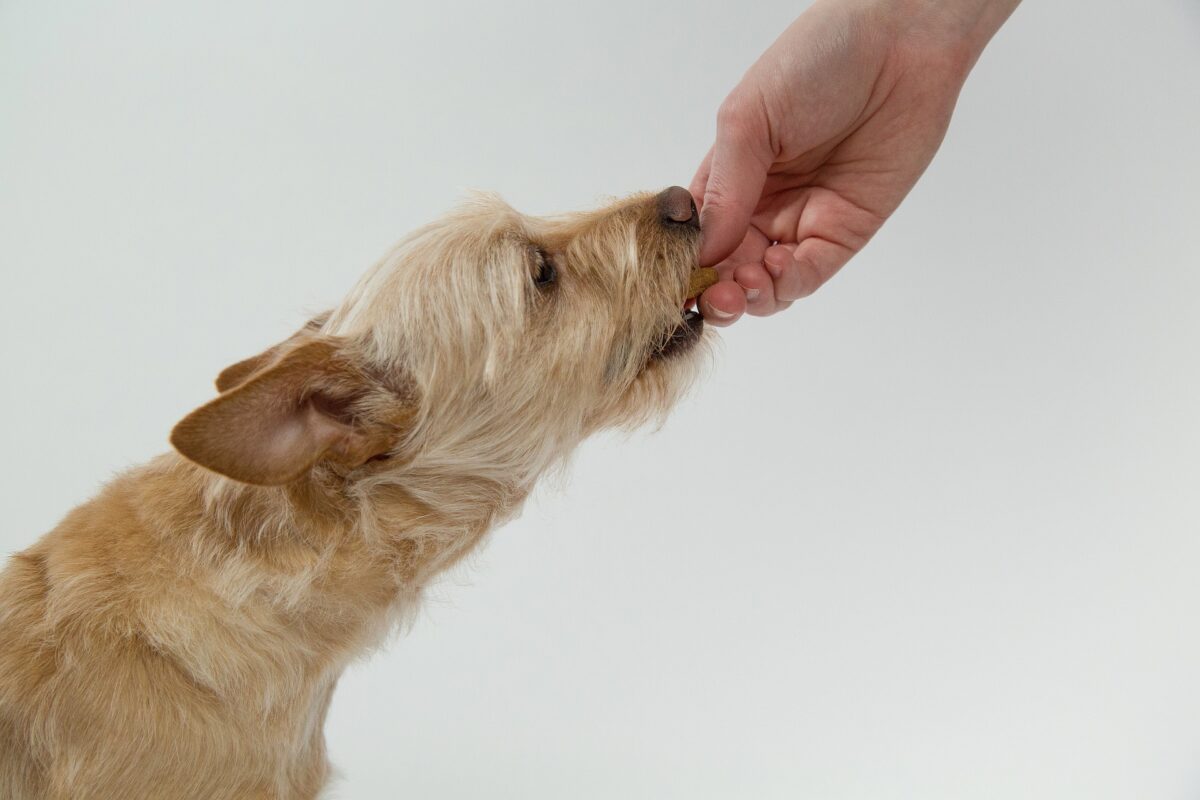
#1 High sugar is a risk
Many dogs enjoy sweet flavors, and your dog may particularly enjoy cherries. Still, given that a cup of whole cherries contains 0,6 ounces of sugar (or about 0.04 ounces of sugar per cherry), cherries should only be served on special occasions.
#2 The seeds and stems contain toxins
Dogs can eat cherry fruit that doesn’t have seeds or stems. Cyanide, a toxin with a low concentration, is present in the stems and seeds. Seeds and stems must be broken down by chewing for the toxins to be released and become toxic to a dog. The dog wouldn’t experience any poisonous effects if the stems and seeds were to pass through the digestive tract whole.
#3 Abdominal obstruction
Cherry pits risk intestinal obstructions because they are prone to get caught in a dog’s digestive system (which is life-threatening and may require surgery). Puppies may be more prone to obstructions and cyanide poisoning, so pet owners should take extra precautions when dealing with a puppy.
#4 Dogs can get drunk from eating rotten fruit
You might be shocked if your dog escapes and wanders into a cherry orchard. They might get drunk if they eat rotting, fermenting fruit they find on the ground. Just like with humans, alcohol is extremely harmful to dogs.
#5 Damaged teeth
Cherry pits are extremely tough. If your dog consumes cherry pits, it may harm their teeth and result in them experiencing severe pain.
What causes cherry poisoning

Dogs who eat cherry seeds that contain cyanide are the most common victims of cherry poisoning. In addition to certain fruits’ seeds, cyanide is in manufactured materials. Cyanide is a known agent in cigarette smoke, pest control products, and burning plastic.
The cherry tree creates hydrogen cyanide as a natural deterrent to defend itself. Hydrogen cyanide is produced naturally as a defense against herbivores. The tree has inactive storage of cyanide, which is waiting to be activated by a predator
When a dog chews on a leaf, cyanogenic glycoside instantly combines with an enzyme to activate it, resulting in the formation of the poison.
Once ingested, cells cannot use oxygen to turn it into energy, resulting in asphyxiation.
What cyanide poisoning does to animals
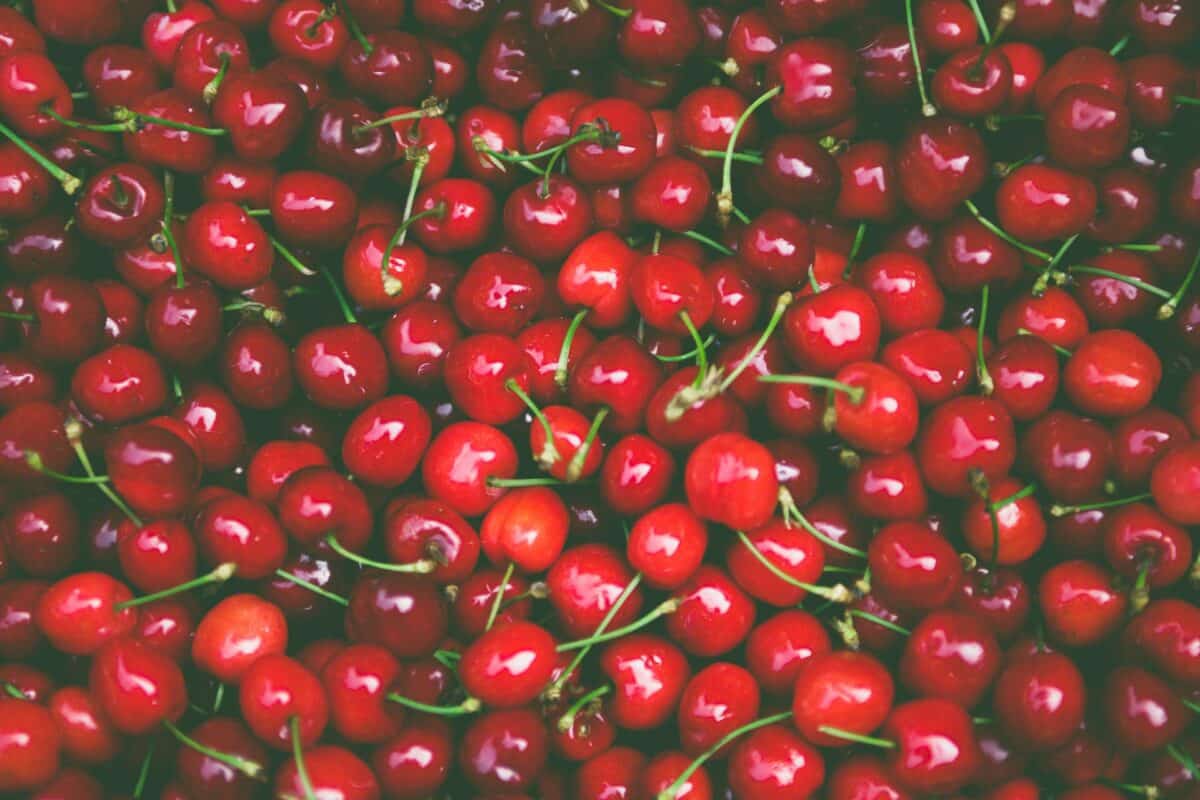
Cyanide can refer to any chemical containing a carbon-nitrogen (CN) bond and is present in some surprising places. Cyanide is present in some foods, and some plants, like cassava, lima beans, and almonds. Common fruit pits and seeds, like those from peaches, apricots, and apples, may contain significant amounts of chemicals that metabolize to cyanide. These chemicals are present in much lower concentrations in the edible parts of these plants.
Cyanide causes tissue killing by decreasing their capacity to use oxygen. They are present in plants, fumigants, soil sterilizers, fertilizers, and rodent poisons (rodenticides). Ingestion of plants that contain cyanide is a common cause of poisoning, though it can also result from careless or malicious use.
Poisoning symptoms may appear between 15 and 20 minutes to a few hours later. The animals start to get excited, breathing quickly and a rapid heartbeat. It’s possible to experience vomiting, watery eyes, drooling, and voiding of urine and feces. Muscle spasms frequently occur, and mucous membranes start turning bright red before changing to a bluish hue. Death typically happens within 30 to 45 minutes when there are severe convulsions. Animals that survive for at least two hours after the symptoms appear may recover.
In the case of dogs, symptoms of poisoning may include:
- Difficulty breathing
- Bright red gums
- Dilated pupils
- In severe cases, dogs can go into shock.
- Seizures
- Agitation
- Hyperventilation
- Tremors
- Diarrhea
- Nausea and vomiting
- Lack of appetite
- Weakness
Immediate treatment of cyanide poisoning is critical. Sodium nitrite and sodium thiosulfate are antidotes. Oxygen may also be helpful, especially in dogs and cats.
What To Do If Your Dog Eats Cherries
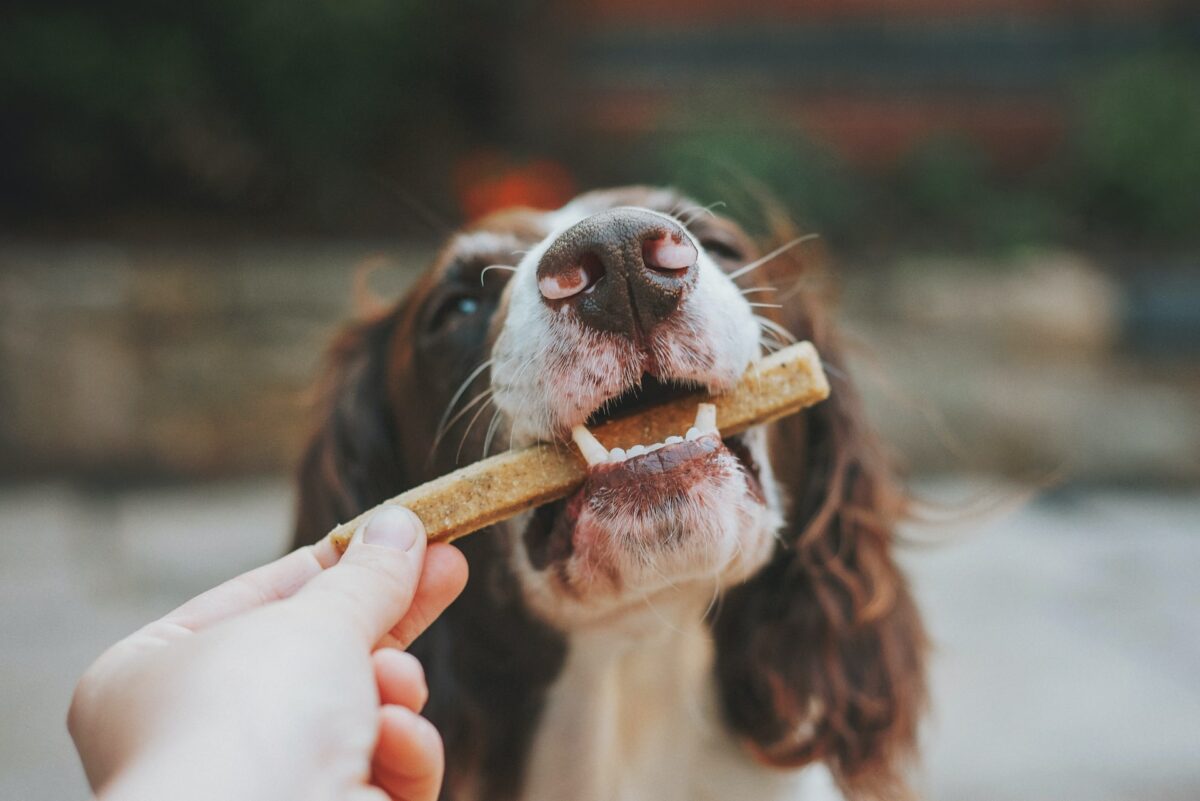
Consuming one or two cherries should be fine without causing much damage. However, it would be best to watch for signs of cyanide poisoning nonetheless. The risk for poisoning is higher the more cherries your dog eats.
The potential gastrointestinal obstruction from the cherry pits is more of a worry if your dog only eats one or two cherries. Constipation, a decline in appetite, and vomiting are all indications of gastrointestinal obstruction. One should watch out for these symptoms for at least 24 hours after your dog has eaten cherries if you spot the signs of a gastrointestinal blockage.
If you know that your dog ate cherries, it is essential to let the vet know roughly how many he ate and when the incident occurred. The veterinarian may perform a urinalysis, blood tests, and a thorough examination. Given that this toxin can be fatal in large doses, treatment may need to begin right away.
What Type of Cherries Can Dogs Eat
Dogs can eat cherries that have their stems, pits, and leaves of cherries removed without causing them any harm. Cherries contain melatonin, vitamins A and C, fiber, antioxidants, and other healthy nutrients.
Some cherries are pitless, like the extremely sweet maraschino cherries (the kind you’ll frequently find in drinks). The issue with these cherries —as with all canned, processed fruits —is not so much the pits as the quantity of extra sugar added to make them sweet. The short-term risks of too much sugar for dogs include hyperactivity and digestive issues like diarrhea. Long-term effects include pancreatitis, diabetes, and obesity.
Nevertheless, many other fruits and foods are readily available that don’t pose the same health risks as cherries or necessitate the trouble of pit removal. For instance, apples served without the core or seeds contain fiber and vitamins. There are also lots of antioxidants in blueberries.
Foods with cherry flavor typically contain sugar, chemicals, and artificial flavoring, which is highly unsuitable for dogs. Even foods that naturally flavor themselves with real cherries frequently have a lot of sugar.
It’s best to stick to natural food made with known dog-safe ingredients that you are familiar with. For more information on the foods that are secure and healthy for your dog, consult a nutritionist or your veterinarian.
Safer Alternative Fruits For Dogs
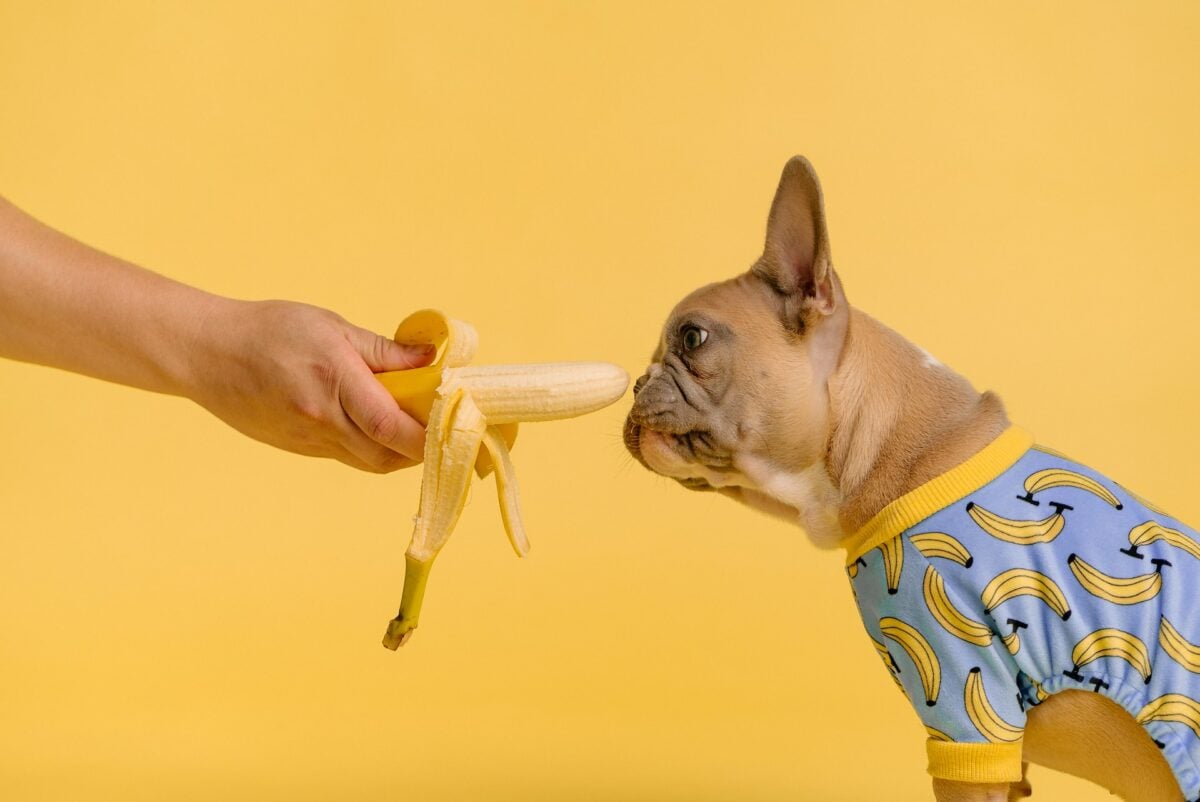
Apples: Should be given without seeds, skin, and the core.
Bananas: This fruit has a high amount of sugar, so you should give it (minus the peel) as a treat once in a while.
Carrots: (in a non-choking size)
Strawberries: but not too much to avoid an upset stomach as they contain a large amount of sugar.
Blueberries
Oranges: without the stem, pulp, or seeds.
Cantaloupe: This is another sweet treat that people should give in moderation.
Cranberries: Some dogs don’t like the flavor of this fruit. If your dog does like it, give it to them in moderate amounts, as too many cranberries can give them diarrhea.
Mango: Before giving your dog a mango, cut it up and remove the pit because it contains cyanide and can choke them.
Oranges: Peel oranges before giving them to your dog.
Peaches: People should avoid feeding canned peaches with high-sugar syrup. For fresh peaches, cut out the pit as it contains cyanide.
Pears: Pear seeds contain a low level of cyanide, so you should remove them before feeding a pear to your dog.
Raspberries: This fruit contains xylitol, an excessive amount of which is toxic to dogs. You should give your dog less than 1 cup of raspberries.
These fruits aren’t for every dog and shouldn’t be given in large amounts because they contain sugar and may upset some dogs’ stomachs. But when served to dogs properly, they can be much healthier than cherries and are a safer alternative. Before feeding your dog these foods, you must first consult a veterinarian.
Possible treatments for cherry poisoning
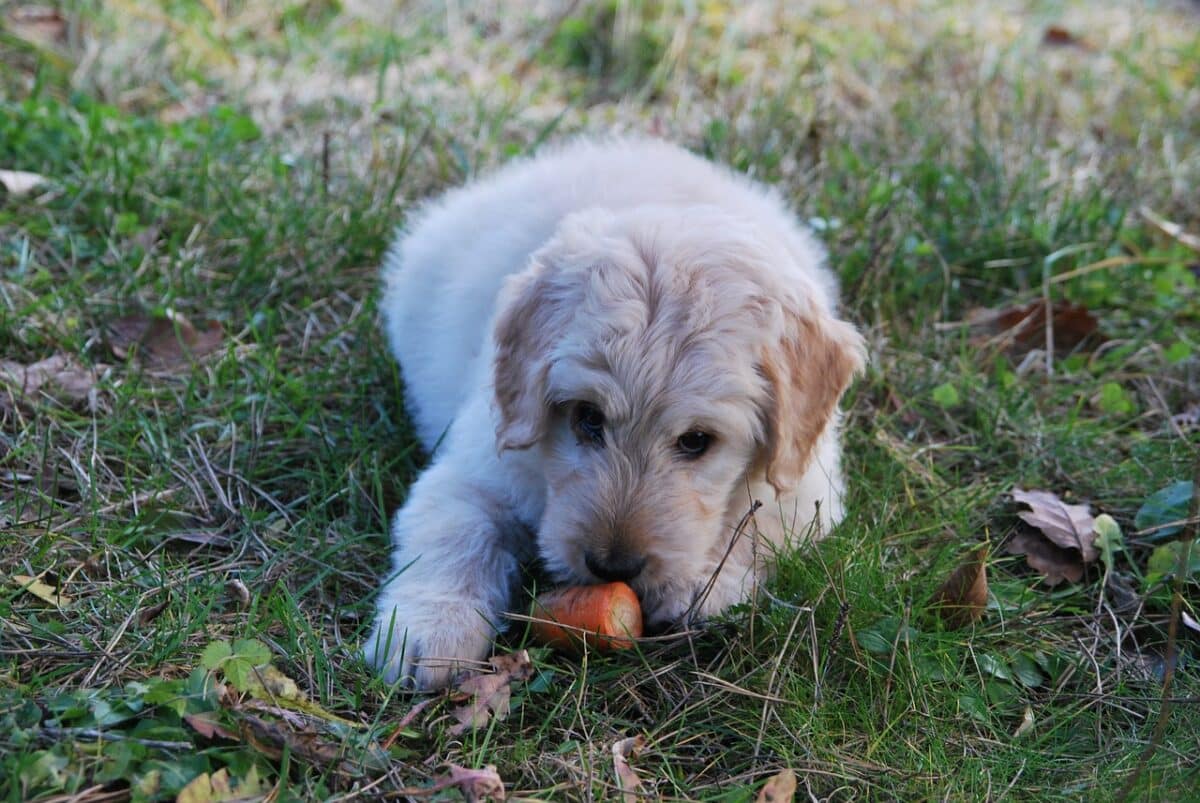
Treatment will be the top priority if you have identified cherry poisoning in your dog to stop the bonding of the chemical compound of cyanide as soon as possible.
#1 Inhalation of Nitrates
Both sodium and amyl nitrate work well as cyanide poisoning treatments after consuming cherries or other toxic fruit seeds; this is frequently one of the vet’s first steps.
#2 Detoxification
With the help of thiocyanate and rhodanese, poisoned dogs can detoxify. Intravenous fluids administer these detoxification techniques, but veterinarians do not frequently offer them.
#3 Sodium Thiosulfate
The vet may give the dog sodium thiosulfate orally. Sodium thiosulfate aids in stopping the dog’s continued production of cyanide. Using sodium thiosulfate helps the cells transform cyanide into a form that the body can eliminate through urination.
#4 Other treatments:
- Activated charcoal to soak up the toxins
- An injection to make your dog vomit
- An operation
- Medication to reduce the effects of the toxins
Conclusion
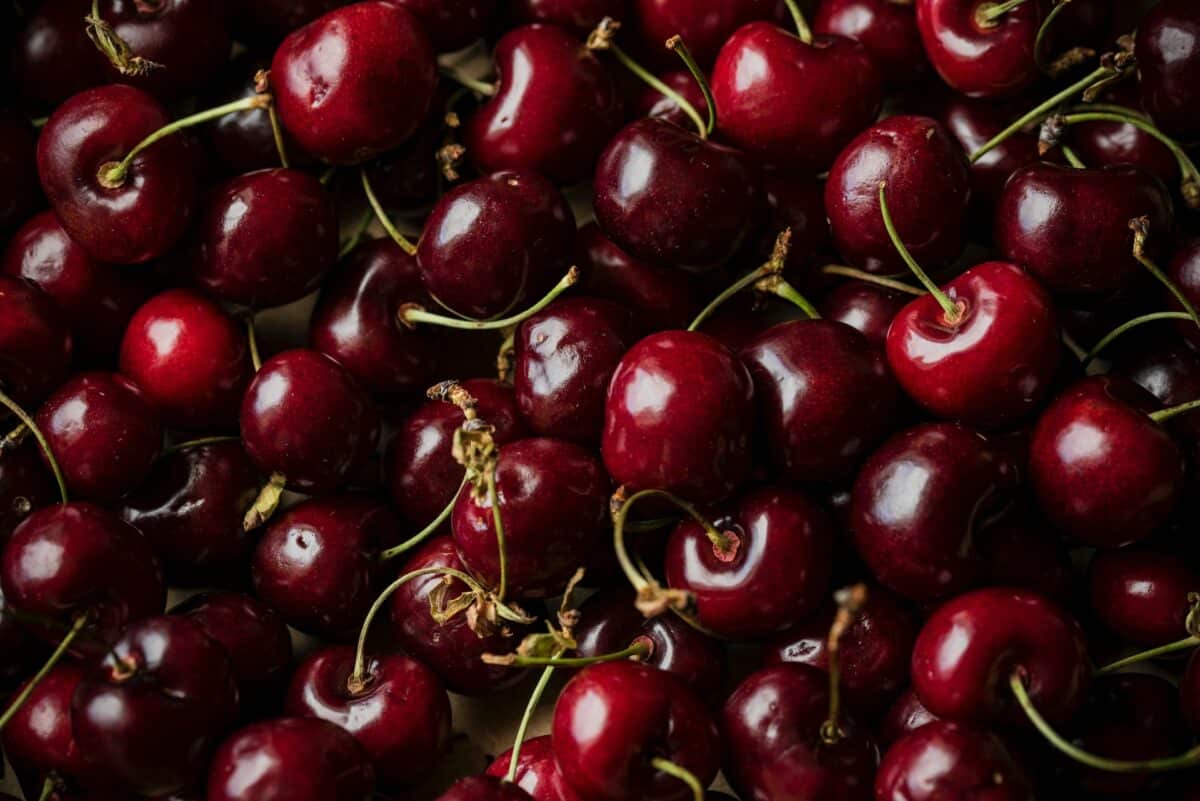
| Key Points |
| Dogs are descendants of wolves and are one of the earliest domesticated animals in the world. |
| For a dog to remain healthy, we must feed them the proper diet (with all the nutrients they require to stay healthy and active). |
| Cherries contain a natural chemical called cyanogenic glycosides. These compounds can release cyanide when metabolized, which is toxic to dogs. |
| Risks involved with eating cherries include: High sugar is a risk, the seeds and stems contain toxins, it can cause abdominal obstruction and dogs can get drunk from eating rotten fruit. |
| Dogs can eat cherries that have their stems and pits removed as they are the only parts that contain cyanide. |
Ultimately, we can conclude that cherries can make dogs sick and lead to death, but they’re safe if given to dogs in small quantities. Dogs can eat unprocessed cherries, but you must use extreme caution when preparing them, making sure to remove the stem, pit, and leaves. Always keep cherries that have yet to be pitted well out of reach.
Thank you for reading this article! If you want to get your hands on more dog-knowledge, head over to read our post on the Top 10 Ugliest Dogs.
Join our Forum for free today!


